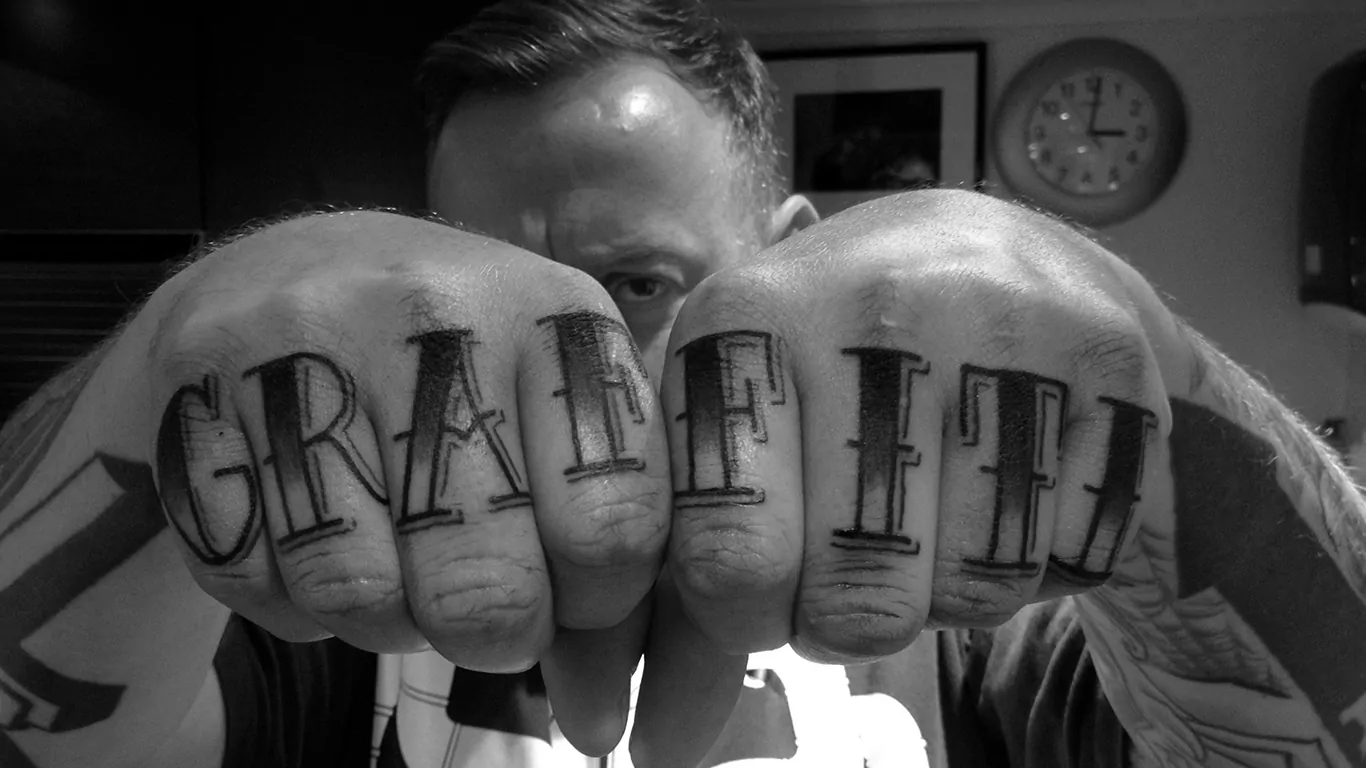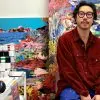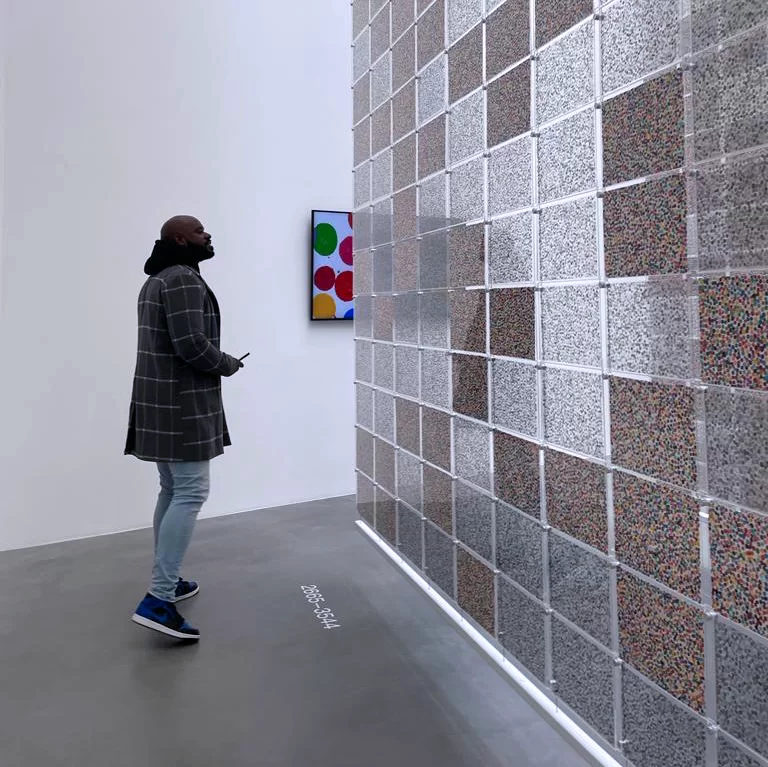Art today often comes prepackaged—polished, primed, and priced for collectors. But AROE? He’s a different breed. A Brighton-based graffiti force, he doesn’t just paint walls; he detonates statements across the urban sprawl, disrupting expectations and shaking the core of contemporary visual culture.
For AROE, there’s no room for meek introspection. His practice demands attention. His towering murals, executed with surgical precision, leave no space for ambiguity—cementing his status as a key figure in the graffiti scene. AROE’s artistic awakening can be traced back to 1983, when Buffalo Gals, Malcolm McLaren’s genre-bending ode to hip-hop, burst onto the screen. A kaleidoscope of breakbeats, b-boy energy, and graffiti‘s burgeoning rebellion, it laid the foundation for AROE’s journey.
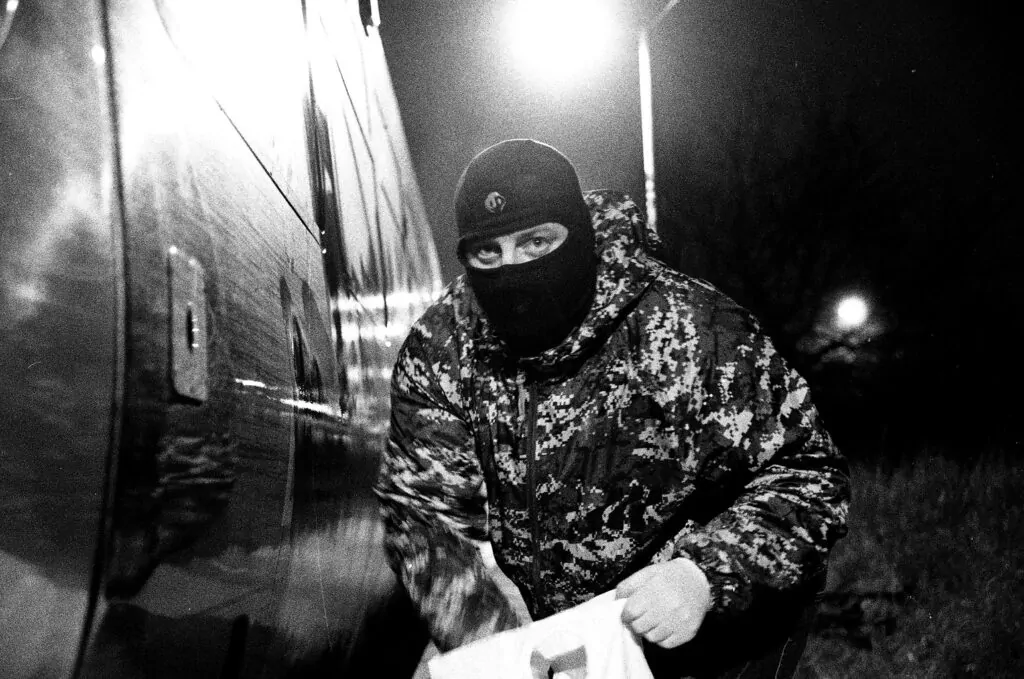
Courtesy of the artist ©AROE
The very essence of graffiti is rebellion. As many canvases and galleries I put work in, I will still write my name on walls and trains around the world because that is the truth of the culture.
AROE
Featured in McLaren’s video was graffiti legend Dondi, one of the pioneers who pushed graffiti to an art form. As AROE puts it, “The most obvious influence would be Dondi, as it was him doing the graffiti in the Buffalo Gals video that first sparked my interest.”
This spark became a foundational element of his creative DNA. A self-taught craftsman, he honed his skills, balancing on the thin line between anarchy and creativity. His signature typography—big, blocky, unapologetically bold—distorts corporate aesthetics into acts of defiance. Graffiti doesn’t have to shout to be heard, but AROE makes sure it does anyway.
No stencils. No projectors. No shortcuts. In an age of digital perfection, AROE keeps it real—freehand, unfiltered, unforgiving. An artisan of the spray can, he showcases a declaration of skill—a rebellion against the digital crutches of modern creativity.
But don’t try to box him in. AROE doesn’t wear a political badge, nor does he romanticize street culture. He exists in the friction between chaos and control, between raw aggression and refined execution. Graffiti, to him, isn’t just art. It’s resistance.
AROE’s influence is borderless. From crafting album covers for Buffalo’s own Westside Gunn to transforming community spaces in Guadalajara, he leaves his imprint wherever he lands. As a key figure in MSK and the Heavy Artillery collective, he isn’t just a participant in graffiti culture—he’s a foundational piece of the puzzle.
Raw, real expression isn’t meant to sit pretty on a pedestal—it’s meant to hit you hard and leave a mark. And in AROE’s hands, a spray can isn’t just a tool—it’s a battle cry, a manifesto, a legacy scrawled onto the world’s shifting canvas.
“This February, AROE opened a major retrospective, AROE: From Then On, in his hometown of Brighton at his daughter Eden Maseyk’s HELM Gallery. We spoke to the legend to learn more about his retrospective, artistic philosophy, and more.”
AROE, your retrospective exhibition From Then On, curated by your daughter Eden Maseyk, marks a significant moment in your career. How does it feel to have your work curated by a family member, and what new dimension does Eden’s perspective bring to your artistic legacy?
AROE: There are many aspects of Eden’s involvement in this exhibition that I enjoyed, the first being the short turnaround time from being approached to the opening, which was just 21 days in total. The fact that my daughter, who was under tremendous pressure, knew she could rely on her dad to deliver a show of that scale within such a short time was particularly meaningful. The 1,010 paintings were completed in 18 days, which left me extra time to create the large window feature display as well.
I also enjoyed watching Eden help compose the final walls into a mosaic, as I had painted the lion’s share of the canvases as individual tiles. This added another layer of collaboration and involvement, making FROM THEN ON the show I am most proud of out of all the exhibitions I have done.
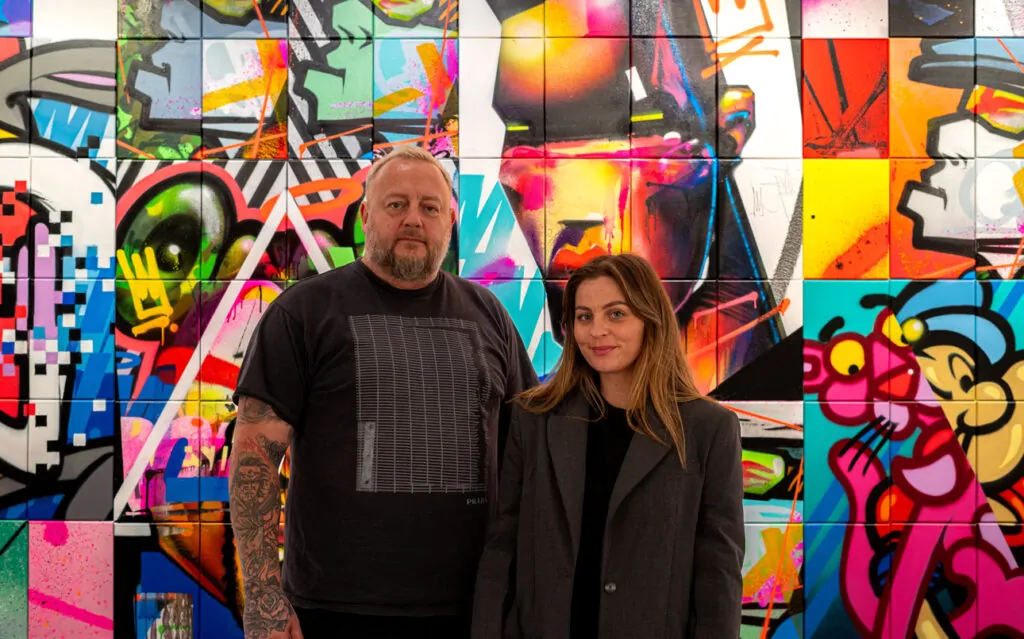
Courtesy of the artist ©AROE
As a pioneer in graffiti culture, how do you view its evolution from rebellious origins in the 1980s to its current mainstream recognition? Do you feel graffiti’s authenticity is at risk as it becomes more commercially accepted?
AROE: Graffiti in the mainstream has always been a controversial topic, and I feel that those who oppose it may not have given it enough thought. I agree that there are two distinct camps, each with its own pros and cons—one being the invited and the other the uninvited. Both, at their core, seek the same thing; the only difference is ‘fame or infamy’.
The freedom of graffiti—writing your name on anything, covering public buildings and trains to project your identity into mainstream culture—is different from being invited or given permission to paint a billboard, for example, which also broadcasts your name into the mainstream.
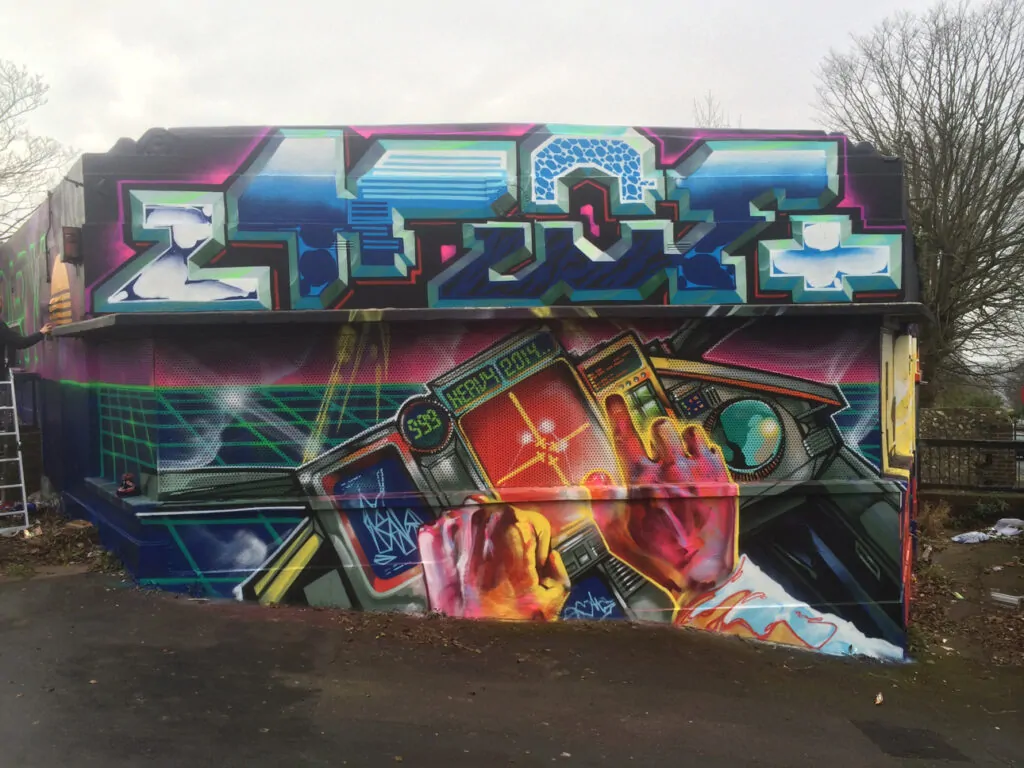
In your murals for communities impacted by violence and poverty, such as in Guadalajara, how do you balance artistic integrity with the responsibility of using art for healing and empowerment?
AROE: Painting in some of the most extreme places in the world has opened many doors that merely travelling to those locations would not. Being there and creating something serves as a leveller among people—Soacha in Colombia and the favelas in Brazil being great examples.
I don’t feel that anything I could paint or create would have a significant impact; however, it may offer some form of respite from the challenges these people face in their lives or communities. I also don’t feel that I have a particular responsibility or duty beyond being a decent human being and treating everyone I encounter with the respect they deserve.
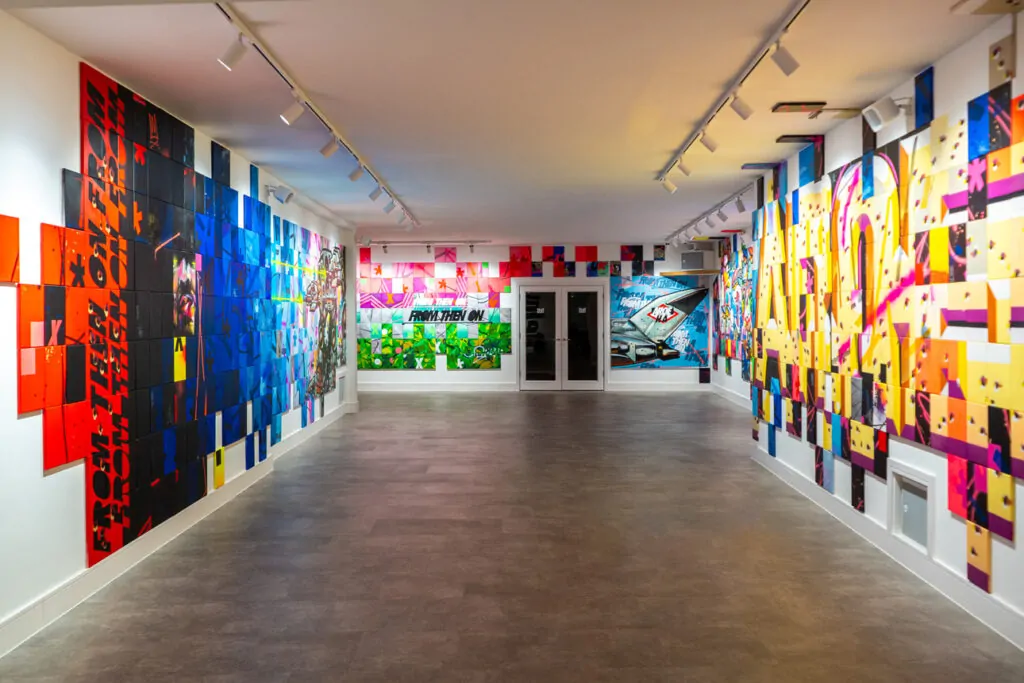
Courtesy of the artist ©AROE
In From Then On, you explore themes like societal issues, war, and male identity. How do these
themes continue to resonate with you, and why do they remain relevant today?
AROE: To be honest the very concept of war sickens me, there are no righteous wars, it’s just greedy psychopaths sending the poor and working class to fight to secure oil, minerals or assets so I’ve been anti war and anti guns for as long as I can remember. The use of guns in my work is done in a mocking way to show how war and killing has been promoted to us since we were kids. As for male identity I think it’s an interesting topic of how to balance expectation with integrity and kindness and not show weakness.
Your collaboration with Westside Gunn on the Hitler Wears Hermes V album cover stands out for its provocative imagery. How did your approach differ from your usual practice, and what did the project mean to you in pushing limits within both art and hip-hop communities?
AROE: The Westside Gunn LP was an important image to paint, and rather than shying away from the brief, I leaned into it—tackling a very sensitive issue as objectively as possible. My concept was based on the idea that hate is taught, so I painted Hitler as a robot programmed to hate, emphasizing that this is what we should all be concerned about. It highlights the possibility that groups or individuals can be indoctrinated into mass beliefs that, to rational people, seem unthinkable.

Designed by AROE
©Westside Gunn
I want to make it clear that I do not support Hitler’s actions in any way, shape, or form. This painting is about an idea—nothing more.
You’ve described graffiti as being about “one-upmanship” and claiming identity. How do you
navigate the tension between competition and community within the graffiti world, and how does this intersect with your personal artistic expression?
AROE: Graffiti is absolute one-upmanship, much like all the fundamental elements of hip-hop. I am aware that the main elements of hip-hop developed separately and were later almost packaged as a culture when exported from New York to the hungry, early-’80s UK.
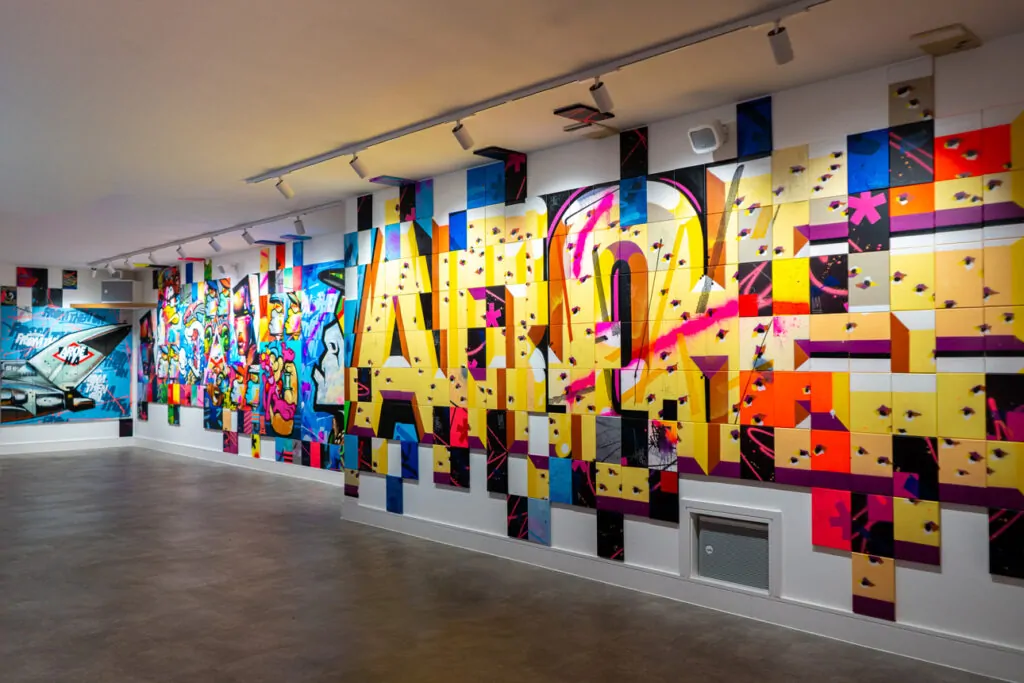
Courtesy of the artist ©AROE
It all worked perfectly, though—it united us as kids in friendly (and sometimes not-so-friendly) competition, where we could earn kudos from our peers through our chosen aspect of the culture. For example, you might not have been athletic, so you would never excel at breakdancing, but if you were fearless and mildly artistic, writing your name everywhere was how you got known.
There will always be tension in a competitive arena, but respect and constant re-evaluation of one’s position in the hierarchy keep the focus on staying on top—or striving to get there. Complaining or whining does not make you elite; it makes you weak. Either be the best or don’t cry about it.
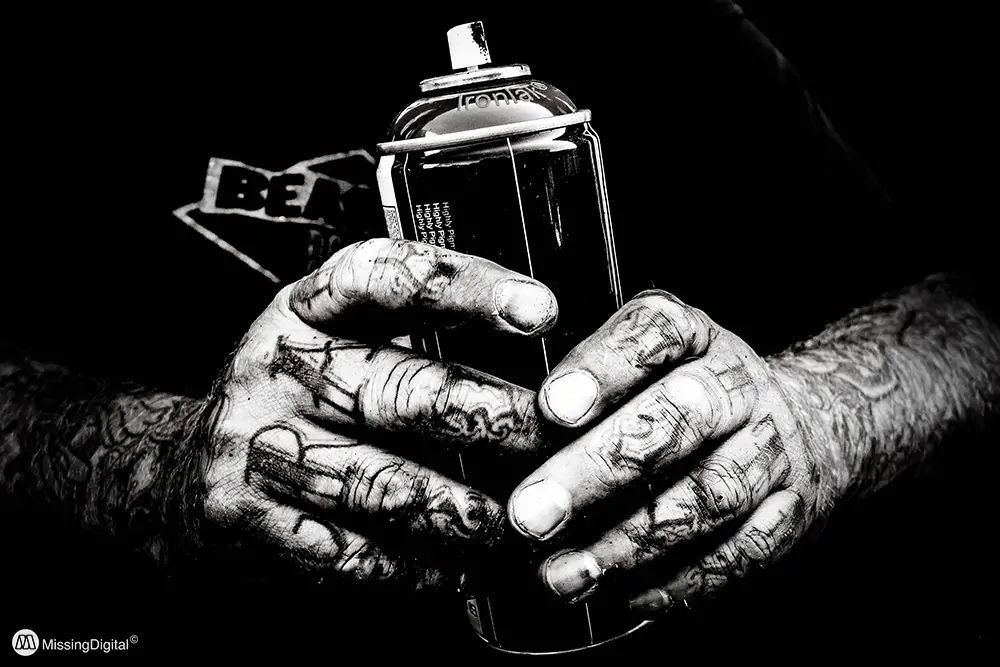
©AROE ©MissingDigital
Your recent work embraces a more abstract approach, focusing on colour, emotion, and intention. How has this shift in style affected your perception of graffiti, and what do you aim to convey with this new fragmented technique?
AROE: I feel that the newer, more abstract work I have been creating is not particularly new; it has always been present in my paintings from the start. It is the very essence of graffiti—just simplified and zoomed in.
The relationship between the clean surface and the graffiti, along with the textures that emerge when the graffiti is buffed off, plays a key role. Coupled with the energy and enthusiasm that go into creating the movement and tempo of the written line on the wall, these elements form the core of all my work.
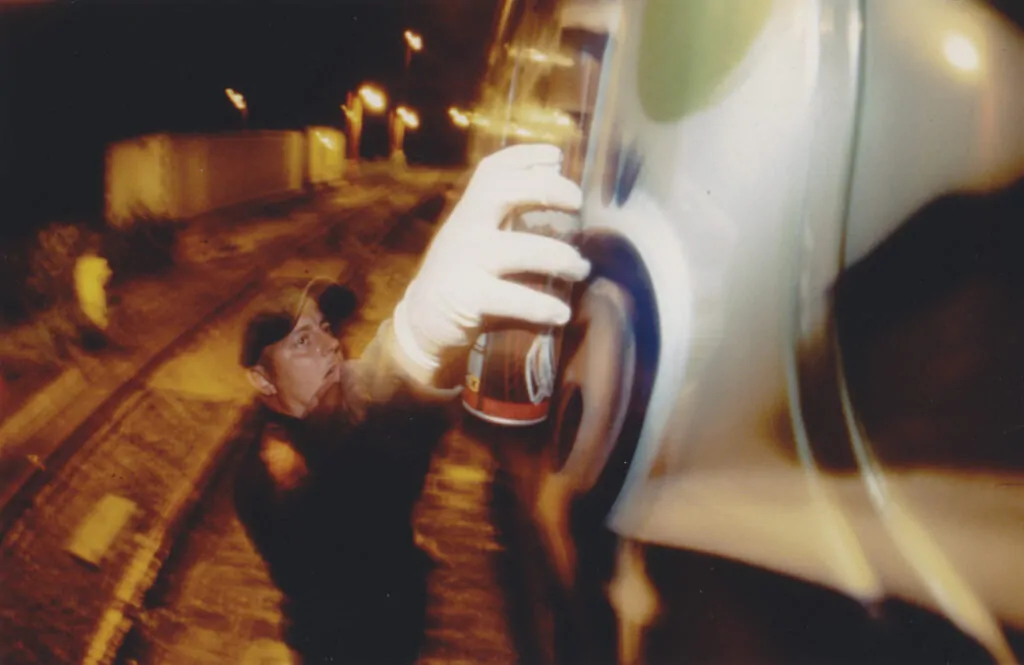
Credit Fakso-a
Looking back at your career and global collaborations, what has been the most transformative
experience for you as both an artist and a cultural figure in the graffiti movement?
AROE: In reflection, graffiti gave me a life. It took me to places I would never have ordinarily seen and introduced me to people I would never have met otherwise. I have witnessed beauty and ugliness in all their forms during my travels, and it has given me immense insight into people and the world.
As a veteran in the graffiti scene, who are your top five graffiti artists, dead or alive, and how have they influenced your own work?
AROE: It’s hard to create a concise top five, as too many people would be left out. So, I’ll try to mention some pivotal episodes instead, as that would be easier.
The most obvious influence would be Dondi, as it was him doing the graffiti in the Buffalo Gals video that first sparked my interest. My secondary school art teacher, Mr Oxley, surprisingly encouraged us to explore graffiti around 1984/85. He felt that any art form that had such a significant impact on his students—and young people across the country—must have some merit and was therefore worthy of investigation.
I learned a lot about painting during the DBS crew era, which later set up the NT crew. Working with Graphotism magazine and becoming a sponsored graffiti artist opened many doors in terms of contacts and travel as the early 2000s began.
Forming the Heavy Artillery crew in 2006—effectively a super crew of like-minded individuals from around the world—has set the stage for the most recent phase of my painting.
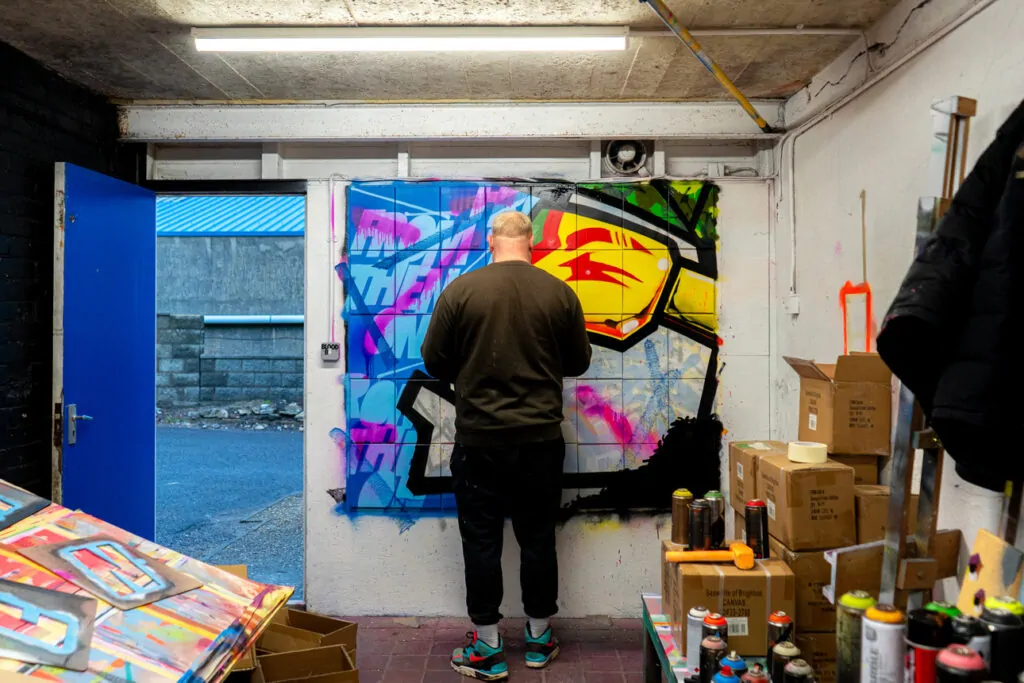
Courtesy of the artist ©AROE
What advice would you give to aspiring graffiti artists looking to sustain a long-term career, balancing creativity, risk, and the evolving landscape of the art world?
AROE: The very essence of graffiti is rebellion as many canvases and galleries I put work in I will still write my name on walls and trains around the world because that is the truth of the culture. I make no excuses for that.
Can we speak about your philosophy of art? Do you believe your philosophy—blending chaos with structure and spontaneity with intention—shapes the way you approach life and your personal interactions?
AROE: My philosophy of art is only to make something that is an extreme, albeit extremely beautiful or extremely challenging as anything bathed in mediocrity or designed solely for the purpose of decoration has no value as far as i’m concerned.
‘AROE: From Then On’ runs until the 2nd of March, 2025 at Brightons Helm Gallery
©2025 AROE


